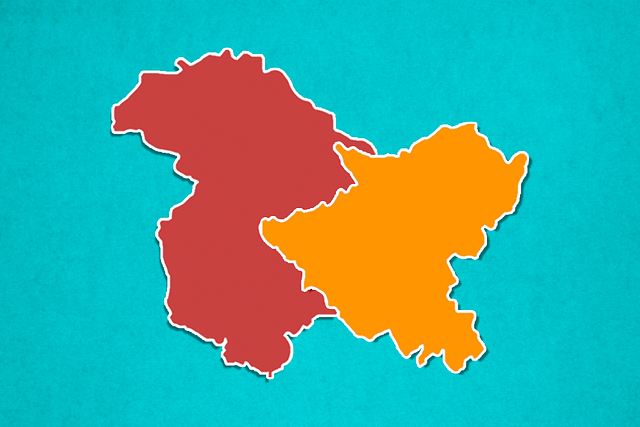
Article 370 In SC: Abrogation Can Be Argued Upon, But How Will Critics Counter Presidential Order Of 5 August?
The abrogation of Article 370 is less important than the 5 August Presidential Order, which extends the whole of the Indian Constitution to J&K.
There is little or no room for the Supreme Court to interfere with this even though it ‘de-operationalises’ the article for all practical purposes.
The writings of legal experts criticising Parliament’s resolution to abrogate Article 370 and the 5 August Presidential Order, appear to be twofold.
One alludes to the ‘spirit of the Constitution’ and ‘solemn commitment to the people of Kashmir’ which Article 370 represents historically.
Second is the technical argument that Article 370 became permanent once the Constituent Assembly of Jammu and Kashmir (J&K) dissolved in 1957 and therefore cannot be repealed.
The second argument deserves more serious consideration because this was the reasoning used by the Supreme Court in ‘Sampat Prakash case’ (1970) to establish that fundamental rights under the Indian Constitution do not apply to preventive detentions in J&K.
Sampat Prakash was the general secretary of the All Jammu and Kashmir Low-Paid Government Servants Federation. He was placed under preventive detention from March 1968 for leading strikes demanding dearness allowance at central rates for J&K government employees.
He could not seek the protection of fundamental rights because of Article 35C. This article was introduced by the President in 1954 using his powers under Article 370 and it completely immunised preventive detentions in J&K from being questioned on grounds of inconsistency with fundamental rights.
Sampat Prakash’s legal attack was against Article 370 itself. He said it was meant to be temporary.
A constitution bench (five judges) of the Supreme Court rejected this stand on the following basis:
The most important provision in this connection is… clause (3) of the article (370) which lays down that this article shall cease to be operative… from, such date as the President may specify… provided that the recommendation of the Constituent Assembly of the State… shall be necessary… no such recommendation was made by the Constituent Assembly of the State… This makes it very clear that the Constituent Assembly of the State did not desire that this article should cease to be operative…
Therefore, the Supreme Court said that the only door to the expiry of Article 370 shut when the J&K Constituent Assembly dissolved.
There are two ways in which the government can get over this view of the Supreme Court. It can be argued that the ‘basis’ of the decision in Sampat Prakash case has been removed by the 5 August Presidential Order. This has been done by amending Article 367 which provides for interpretation of terms in the Constitution.
The President has inserted a clause in Article 367 which requires the phrase constituent assembly in Article 370 to be read as the legislative assembly.
Therefore, abrogation of Article 370 can happen even now if the legislative assembly recommends.
When the state is under President’s rule, Parliament can assume the powers of the legislative assembly and consequently any recommendation from Parliament is good enough for the President to abrogate it.
If the court is not convinced with this, the only option for the government is to get it to reconsider the Sampat Prakash judgement through a larger bench.
There are reasons to doubt the correctness of the judgement. By interpreting the words constituent assembly in Article 370 literally the Supreme Court rendered relevant clauses in the article obsolete. No part of the Constitution can remain a dead letter. The government should hope that a larger bench overturns the Sampat Prakash verdict.
Now come the moral questions. Critics say that Parliament recommending abrogation to the President, instead of the state assembly doing so, amounts to the Centre recommending something to itself.
Certainly, Parliament cannot replace the legislative assembly in normal circumstances. But the law on when this can happen is well settled. It is nobody’s case that the situation in J&K doesn't warrant invocation of Article 356 which enables such powers.
The Supreme Court in the famous ‘S R Bommai case’ explained that under our Constitution “the federal state is a political convenience intended to reconcile national unity and integrity and power with maintenance of the state's right. The end aim….of Indian federalism is to place the nation as a whole under control of a national Government…”.
A more important moral question is whether abrogation of Article 370 amounts to breach of some promise made by our Constitution framers to the people of J&K or to the Maharaja.
Irrespective of the veracity of such claims, the Supreme Court is not going to strike down the government move on some historical grounds. A well-known principle regarding interpreting the Constitution is that “if the meaning of a provision is plain… its historical background becomes irrelevant.” (Privy Purses case, 1970)
In any event, the architect of Article 370 Gopalaswamy Ayyangar had no doubt in his mind that it was meant to be temporary.
He said “We have said article 211A (relating to constitution of states) will not apply to the Jammu and Kashmir State. But that cannot be a permanent feature of the Constitution of the State, and hope it will not be. So the provision is made that… the President may on the recommendation of that Constituent Assembly issue an order that this article… shall either cease to be operative, or shall be operative only subject to such exceptions…”
Therefore, any assurance to anyone about the permanence of Article 370 is imaginary.
It is the writer’s personal opinion that actual abrogation of Article 370 is less important than the 5 August Presidential Order, which extends the whole of the Indian Constitution to J&K. There is little or no room for the Supreme Court to interfere with this even though it ‘de-operationalises’ the article for all practical purposes.